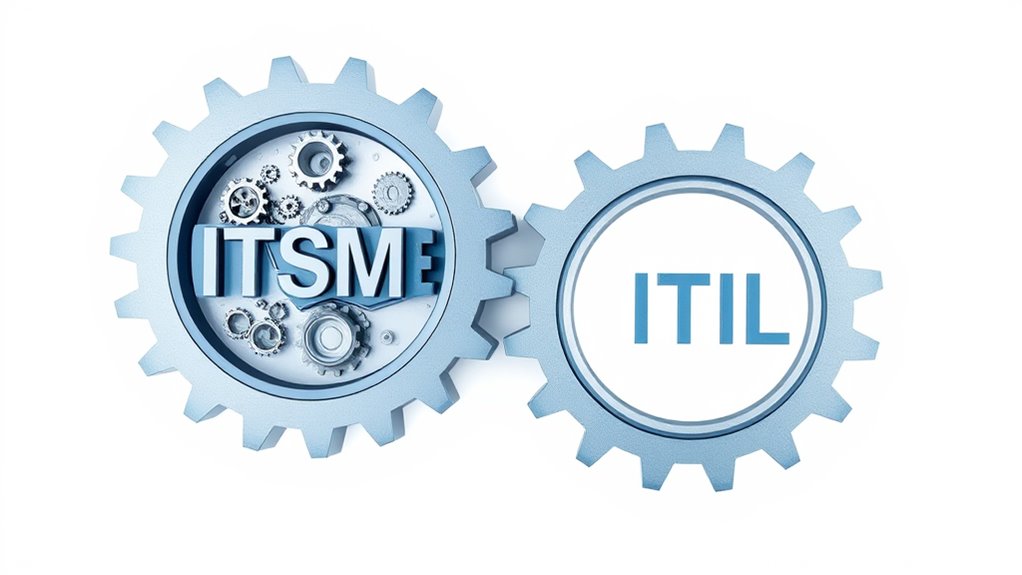ITSM transforms business operations by delivering measurable value through structured service management frameworks. Organizations implementing ITSM report 80% fewer service problems, 81% reduction in security incidents, and over 70% cost savings through process optimization. The framework enables real-time monitoring, standardized delivery, and enhanced customer experiences through AI-enabled solutions. With projected market growth to $22.1 billion by 2028, ITSM’s integration offers significant opportunities for organizations seeking operational excellence and digital transformation success.

As organizations increasingly prioritize digital transformation, IT Service Management (ITSM) has emerged as an essential framework for delivering measurable business value. The implementation of ITSM through frameworks like ITIL has demonstrated significant positive impacts across multiple business dimensions, with 80% of organizations reporting reduced service-related problems and 81% experiencing fewer security incidents following adoption. The rise of hybrid work environments has further accelerated ITSM adoption as organizations strive to maintain operational excellence across distributed teams.
The financial benefits of ITSM implementation are particularly compelling, with 70% of organizations achieving operational cost reductions exceeding 10%. This optimization occurs through smarter allocation of IT budgets, process consolidation, and automation of routine tasks. The reduction in manual labor costs and error rates directly contributes to improved bottom-line performance, while enhanced vendor management drives more favorable financial outcomes. Implementing standardized frameworks ensures consistent processes and promotes efficiency across the organization.
ITSM’s impact on service quality and user experience is equally notable, with 73% of IT teams reporting significant improvements in service metrics. Real-time monitoring capabilities enable faster incident detection and resolution, while standardized processes guarantee consistent service delivery. These improvements directly correlate with increased customer retention and trust, creating a stronger foundation for business growth. Organizations implementing Virtual Customer Assistants have experienced up to a 70% reduction in inquiries.
The framework’s influence extends to talent management, with 84% of IT organizations successfully attracting and retaining skilled professionals in ITSM roles. Clear career paths and professional development opportunities create an environment that promotes continuous learning and collaboration, giving organizations a competitive advantage in recruitment.
Technology advancement through ITSM is particularly evident in automation and innovation, with 75% of IT groups maintaining technological relevance through ITSM-driven initiatives. The integration of AI-enabled Service Management (AISM) for incident response and knowledge management represents a significant evolution in capabilities.
The global ITSM market reflects this momentum, projected to reach $22.1 billion by 2028, with cloud-based solutions leading adoption due to their scalability and business continuity benefits. This growth underscores ITSM’s vital role in enabling organizational agility and supporting thorough digital transformation initiatives.
Frequently Asked Questions
How Long Does It Typically Take to Implement ITSM in an Organization?
ITSM implementation typically takes 3-12 months, depending on organizational size and complexity.
The timeline breaks down into distinct phases: requirements gathering and vendor selection (1-2 months), system configuration and data migration (2-4 months), and user training with acceptance testing (1-2 months).
Factors affecting duration include customization needs, staff readiness, and integration requirements.
Cloud-based solutions generally enable faster implementation compared to on-premises deployments.
What Are the Common Challenges Faced During ITSM Implementation?
Organizations commonly face four major categories of challenges during ITSM implementation.
Management challenges include lack of executive support and unclear strategic alignment.
Cultural obstacles manifest through resistance to change and departmental silos.
Technical hurdles involve system integration difficulties and data management issues.
Resource constraints present problems with limited staff, insufficient training, and competing operational priorities that can impede successful ITSM deployment and adoption.
How Much Does ITSM Implementation and Maintenance Usually Cost?
ITSM implementation costs vary greatly based on organization size and requirements.
Initial licensing typically ranges from $20-100 per user monthly, while implementation costs add 50-60% on top of license fees.
Setup and go-live expenses run between $10,000-100,000.
Ongoing maintenance includes annual fees starting at $200 for upgrades and support.
Advanced modules like ITOM can cost an additional $150-200 per user monthly.
Popular tools like ServiceNow, Jira, and Freshservice offer tiered pricing models.
Which Industries Benefit Most From Implementing ITSM Practices?
Based on industry data, IT & Telecommunications benefit most from ITSM due to their complex infrastructure needs and high service demands.
Healthcare shows the fastest growth in ITSM adoption, driven by digital health technologies and compliance requirements.
Government sectors leverage ITSM for citizen services and data security, while Manufacturing and Retail use it to optimize operations and enhance customer experience.
Each industry sees significant improvements in efficiency and service delivery through ITSM implementation.
Should Small Businesses Invest in ITSM or Is It Only for Enterprises?
Small businesses should definitely invest in ITSM as market trends show significant benefits beyond enterprise applications.
Research indicates SMEs achieve measurable gains through ITSM implementation, including 15% improvement in customer satisfaction and operational efficiency.
ITSM helps small businesses standardize IT processes, reduce costs, manage risks, and improve service delivery.
The scalable nature of modern ITSM solutions makes them both accessible and valuable for organizations of all sizes.









